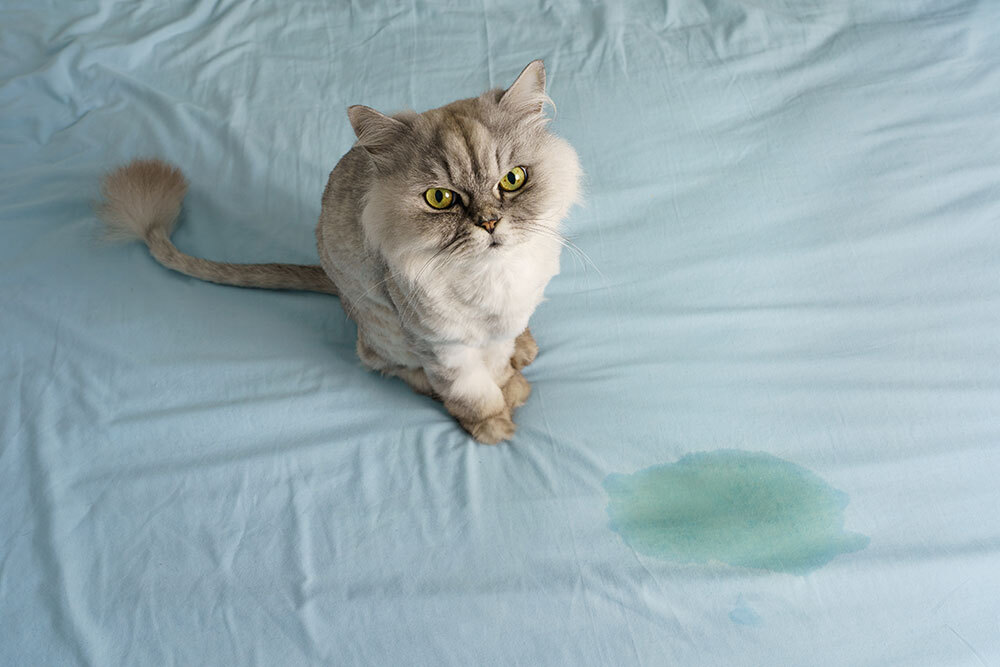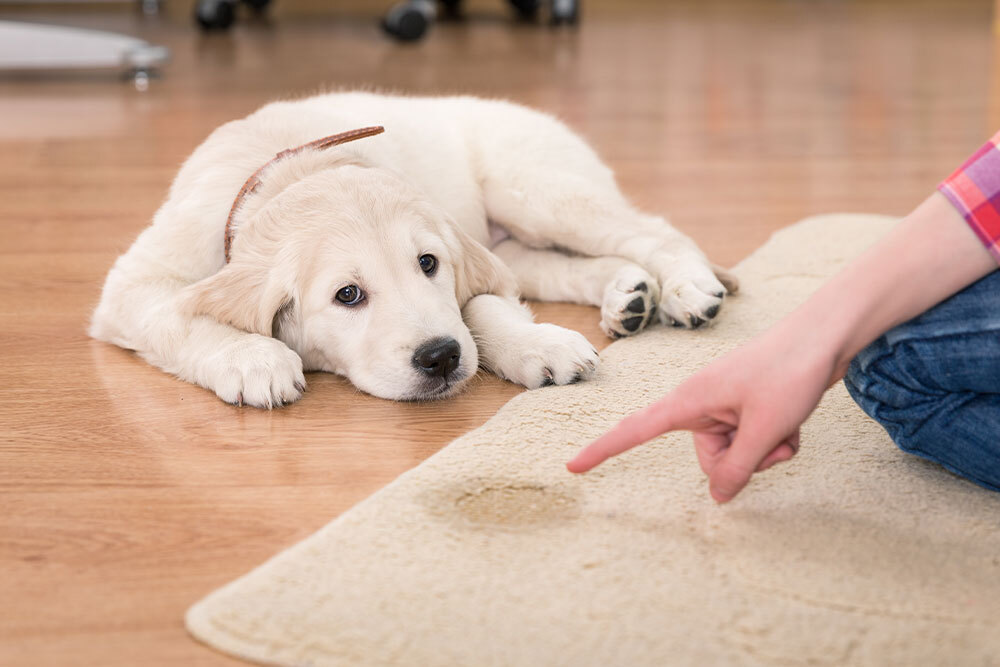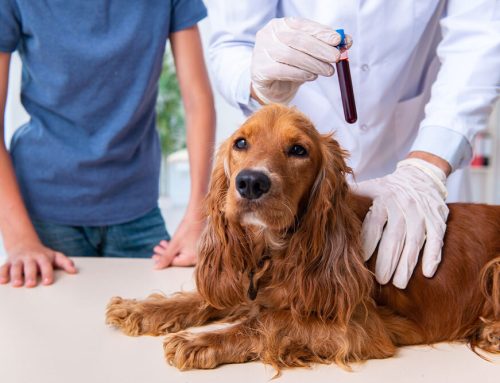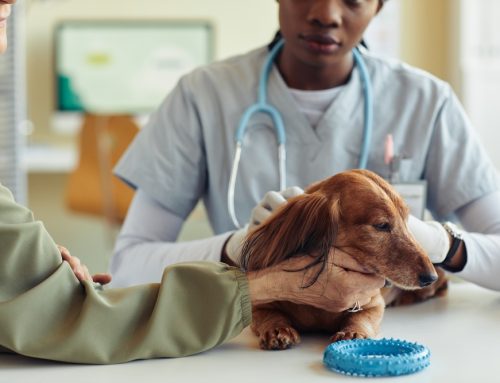When your cat suddenly stops sleeping at the foot of the bed because she’s constantly in the litterbox- or your dog whines to go out every hour only to produce a few drops of urine- it’s time to pay attention.
At Iris Veterinary Care, serving Lewes, Delaware and the surrounding coastline, we treat urinary tract infections (UTIs) in pets every week. We know how disruptive they can be- for your pet’s comfort and for your routine. Let’s walk through the signs, the causes, and how we can help right from your doorstep.
What a UTI Really Means
A urinary tract infection typically involves the bladder and urethra (a lower UTI), though in some cases it can travel to the kidneys. Bacteria such as E. coli enter through the urethral opening and trigger inflammation.
In dogs, anatomical structure, incontinence, or concurrent illness can create the perfect environment for bacteria. In cats, stress-related bladder inflammation, crystals, or mucus plugs often play a role.
Why Do Pets Develop UTIs?
There are several factors that increase the risk of infection:
- Bacterial invasion: coli, Staph, and others take advantage of the right environment. Cornell’s overview on canine UTIs explains just how opportunistic these organisms can be.
- Endocrine disease: Conditions like diabetes alter urine chemistry and reduce immune function. This AAHA guide on diabetes in pets shows how closely these issues are linked.
- Bladder stones: Stones create rough surfaces where bacteria thrive. Treatment often includes diet or cystotomy surgery.
- FLUTD in cats: Feline Lower Urinary Tract Disease involves stress, crystals, and inflammation. Royal Canin’s FLUTD guide is a great resource.
- Anatomical issues: Female dogs have shorter urethras; male cats have narrow ones. Conditions like recessed vulvas and skin folds around the vulva can trap bacteria and moisture.
Spotting the Early Signs
Catch it early, and you may save your pet from escalating pain- or even emergency care. Look for:
- More frequent trips to urinate
- Straining, vocalizing, or only dribbling urine
- Pink or reddish urine
- Licking at the genitals
- House soiling or urinating in strange places
- Fever, hiding, or changes in appetite
Keeping a short log of behavior changes can help your vet identify patterns and pick the right next step.
When It’s an Emergency
In dogs, a UTI is rarely life-threatening. But in male cats, the urethra can seal shut with crystals or mucus- a situation that can become fatal in less than 24 hours.
If your cat is posturing to urinate without producing anything, is crying out, or suddenly collapses, treat it as an emergency. Read more about urinary obstruction in male cats.
Severe red-brown urine, vomiting, or a bloated, painful abdomen in any pet also calls for immediate care.
How We Diagnose UTIs- Right From Your Driveway
At Iris Veterinary Care, we bring diagnostic tools to your home. That means your pet stays calm while we get the answers. During your visit, we may recommend:
- Physical exam: We palpate the bladder and check for discomfort or distension
- Urinalysis: Measures pH, concentration, crystals, and presence of blood or bacteria
- Urine culture: Identifies bacteria and the most effective antibiotic
- Imaging: In-house X-rays or ultrasound to spot bladder stones or anatomical issues
- Bloodwork: To assess kidney function and look for systemic concerns
With everything done on-site, we move from symptoms to solutions without delay.
Mobile Treatment Options- Including Cystotomy When Needed
Some UTIs resolve with medication and fluids. Others need more intensive care. We tailor treatment based on the cause and severity- but our mobile clinic allows us to handle almost everything from your driveway:
- Targeted antibiotics, prescribed based on culture results
- Pain relief, to ease inflammation and make urination more comfortable
- Fluids, to flush bacteria and support hydration
- Prescription diets, when stones or pH imbalance are a factor
- Surgical cystotomy, performed in our fully equipped mobile hospital when stones need to be removed
- Supportive therapies, like anti-anxiety tools or lifestyle changes to prevent recurrence
Caring for a UTI-Prone Pet
If your pet has had one UTI, they may be prone to another. But prevention doesn’t have to take over your life.
Hydration, hygiene, and habit are the trifecta for prevention. Here’s where we start:
- Schedule regular bathroom breaks for dogs- stagnant urine increases risk
- Multiple litterboxes in low-traffic, quiet areas help picky cats relax. Scoop litterboxes twice a day to monitor changes for high-risk cats. Try non-clumping plastic litter for home urine collection.
- Add a white towel under resting spots- pink urine is easier to spot
- Wet food or water-topping increase fluid intake. You can even Flavor ice cubes or use water fountains to increase hydration
- Add pheromone diffusers to reduce stress in multi-pet households
- Keep the genital area clean and manage weight, especially in pets with recessed vulvas or skin folds.
- Prescription urinary diets can adjust mineral content and pH
FAQs
Can a mild UTI resolve without treatment?
Occasionally, but most worsen without care. Left untreated, infections can spread to the kidneys or bloodstream.
Why does my cat get UTIs after stress or moving?
Stress affects hormone levels and the bladder lining. It can also lead to idiopathic cystitis, a non-bacterial but painful condition.
How fast do antibiotics help?
Pain relief usually begins within 24 hours. Blood in the urine should fade in a few days. If it doesn’t, we’ll reassess.
We’re Here- With Relief That Comes to You
UTIs are uncomfortable, stressful, and- thankfully- very treatable. At Iris Veterinary Care, serving Lewes, Delaware and the surrounding coastline, we’re here to make the process easier: with diagnostics at home, personalized treatment, and a plan that works for your family.
If you’re worried about your pet’s bathroom habits or behavior, trust your gut- and reach out. We’re ready when you are.








Leave A Comment